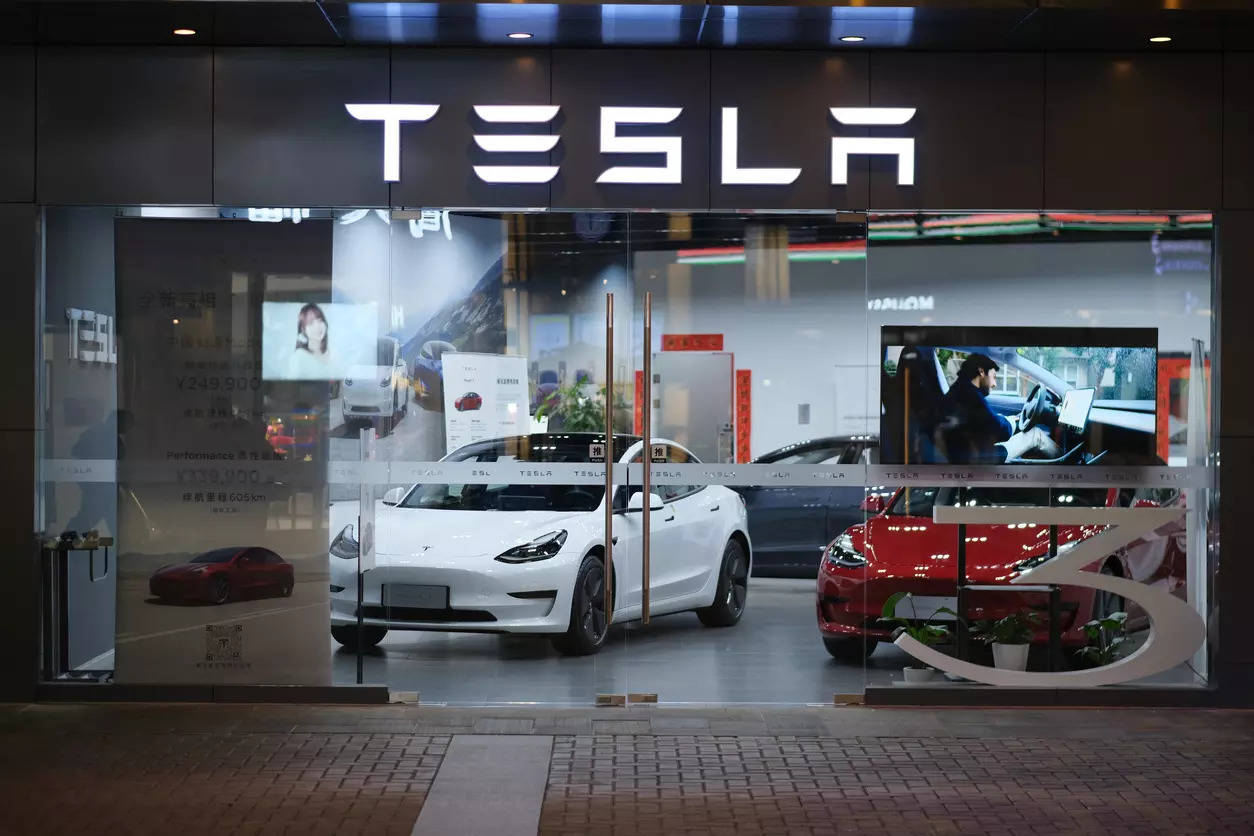
New Delhi : It has been nearly six months since the government announced an E-Vehicle policy to promote India as a manufacturing destination for global electric vehicle OEMs by offering import concessions on large cars in lieu of investment guarantee in India. But SOPs
(standard operating procedures) are yet to be issued. The SOPs are critical to define the contours of this policy, which was initially seen as a copybook of the conditions which US EV giant Tesla had set before committing to a mega investment in India. Months have gone by,
a new government is in place at the Centre but Tesla is nowhere in the picture.
A top government official told ETAuto that not a single OEM has come forward and applied under the policy. “Why will we issue SOPs when not even a single OEM has shown interest? VinFast has said it is interested by it has not filed any application for consideration. No one
else seems interested”.
Industry sources said that two-three global OEMs have shown interest in setting up manufacturing facilities under this policy but they want substantial tweaks. They also said that application should be sought only after SOPs are framed and communicated. So it appears to be a chicken and egg story – industry wants SOPs before commitments while the government is waiting for actual applications under the poilicy before issuing
SOPs.
Concessions OEMs want
“Can the $500 million investment mandated under the policy to avail of import duty concessions on Completely Built Units (CBUs ) be available for brownfield investments in manufacturing? In short, will those OEMs which have already invested in manufacturing electric vehicles in India qualify? How is a new investment defined under the policy? All of these questions remain unanswered till the government releases SOPs,” a senior industry official said on condition of anonymity.
Confusion continues over whether Vietnamese company VinFast will qualify under the policy, as it is now, this person said. In a statement earlier, though, VinFast had said that the new policy would create competencies, upskilling and set up a robust supply chain in the
country.
“We highly value the Indian government’s new EV scheme as it aims to drive large investments in manufacturing, create competencies and upskilling, set up a robust supply chain and offer consumers world-class, zero tailpipe emission vehicles,” Pham Sanh Chau,
Chief Executive Officer of VinFast India, had said.
Before that, in January this year, Vinfast signed an MoU with the Tamil Nadu government to set up an integrated EV plant in the state. The plan was to bring in completely knocked-down (CKD) parts of the EVs and assemble them at the plant, which has an initial capacity of 50,000 vehicles per annum. The company had pledged $500 million capex for India and said that “this forward-looking policy helps us introduce a wide variety of smart, green, premium-quality SUVs, at the inclusive prices, along with outstanding after sales policies.”
But the person quoted above said unless the SOPs are issued, there is no clarity over whether import duty concessions apply for brownfield facilities. “VinFast has already invested, will it be considered greenfield? Only SOPs will make this clear”. He further said that clarity is also needed on whether investment of $500 million will include investment made on charging infrastructure, for example, in addition to manufacturing EVs.
“Typically, the time taken between releasing a policy and coming out with SOPs is 120 days. And then, another 120 days are needed to gauge investor interest before the clock starts ticking for investments to come in. We are not sure why it is taking this long for even SOPs to come in,” he wondered.
The Scheme:
In March this year, the Centre approved the policy (now renamed as “Scheme to Promote Manufacturing of Electric Passenger Cars in India) to allow companies that invest a minimum of ₹4,150 crore and which meet domestic value-added conditions to import a limited number of vehicles at reduced customs duties. The policy gave investors three years to set up manufacturing facilities in India, start commercial production and reach 50 per cent domestic value addition (DVA) within five years at the maximum (25 per cent by the third year). In lieu of this, OEMs could import cars with CIF value of $35000 or more at a steep duty cut. Currently, fully built cars attract 100% import duty if their CIF value is over $40,000
and 70% for cheaper vehicles. The new policy allows imports at 15% duty.
What’s good:
A cap of 8000 units on the total number of vehicles which can be imported in one year was a relief to the domestic industry, since it allows the local manufacturers a breather in scaling up operations. Another plus in the policy was the mandatory commitment being sought from the foreign OEM to set up a facility in India within the stipulated time frame and begin localisation. This would boost the development of the local ecosystem of EV component suppliers and also help cloak OEMs gain scale. And the bank guarantee being sought in lieu of duty foregone is another point in favour of the new policy, since it will further tie down the foreign OEM’s hands.
Local OEMs concerned
In the runup to the policy being drafted, many local electric vehicle manufacturers had expressed reservations against allowing cheaper imports of fully built EVs. Tata Motors is currently the biggest local EV player, with Nexon, Tiago and Punch. The local OEMs had pleaded their case by citing the investments already made in developing a local ecosystem for EV components and the long road ahead before economies of scale could be achieved, given the substantial difference in the cost of acquisition of EVs versus ICE vehicles. As of now, there could be up to 70% differential in the acquisition cost of an EV versus an ICE vehicle of a similar category. So will the local industry swallow the new policy without a hiccup? Or will the SOPs allow brownfield investments by local OEMs to also allow them import concessions? This remains to be seen. ends

